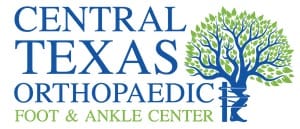Common Diagnoses:
Talonavicular Arthritis
Overview
Talonavicular arthritis is a condition that can cause pain and difficulty walking. There is no cure for talonavicular arthritis, but there are treatment options available to help relieve symptoms and improve joint function.
Talonavicular arthritis refers to arthritis in the talonavicular joint, which is comprised of the navicular and talus. This joint is essential to the side to side motion of the foot while walking and is known to be a complex joint.
Talonavicular arthritis can cause pain close to the ankle, and lead to bone fragments growing over the joints.
Symptoms
The symptoms of talonavicular arthritis vary depending on the severity of the arthritis, but can include pain and stiffness in the foot and ankle, difficulty walking, and swelling around the talonavicular joint.
- Talonavicular arthritis symptoms can include pain which is intensified when you are either walking or standing, or putting weight on the talonavicular joint in another way.
- There is typically pain and stiffness in the morning, which subsides as the day go on, but can also increase in the latter stages of the day.
- Talonavicular arthritis pain has been seen to be more pronounced in damp and cold weather.
- Talonavicular arthritis can cause a limp, it can also limit activities, meaning those with the conditions are unable to play sports or partake in other types of physical exercise as much.
- If you have talonavicular arthritis, you may develop a joint deformity over time as your foot changes shape. You can also experience an inhibited range of motion.
Diagnosis
Diagnosis of talonavicular arthritis is made through physical examination and imaging. These include; x-ray, CT scan and MRI scan.
Treatment
There is no cure for talonavicular arthritis, but there are treatments that can help to relieve the pain and improve joint function.
Surgery may be necessary in severe cases to fuse the talonavicular joint.
The non-surgical options to treat talonavicular arthritis include:
- wearing modified footwear which is designed to support the talonavicular joint and relieve pressure on the midfoot
- modifying your physical activities with a period of rest, avoiding high impact exercises and sports
- orthotics, such as shoe insoles which can stiffen the midfoot and ease symptoms
- walking aids such as a boot, cane or stick
- physiotherapy which focuses on exercises to strengthen the muscles around the talonavicular joint and improving range of movement.
Medications which can be used to treat talonavicular arthritis include analgesics such as paracetamol, as well as nonsteroidal anti-inflammatory drugs such as ibuprofen.
When non operative treatment fails to work, surgery may be considered appropriate to treat talonavicular arthritis. Surgery involves fusing the talonavicular joint by removing the arthritic cartilage and holding the bones firmly together with metal plates and screws.
